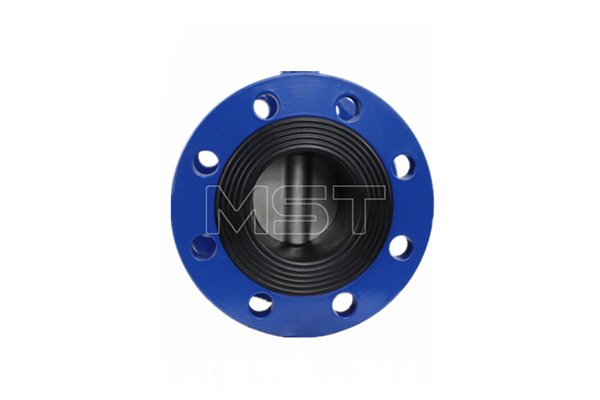 English
English Español
Español  Português
Português  русский
русский  Français
Français  日本語
日本語  Deutsch
Deutsch  tiếng Việt
tiếng Việt  Italiano
Italiano  Nederlands
Nederlands  ภาษาไทย
ภาษาไทย  Polski
Polski  한국어
한국어  Svenska
Svenska  magyar
magyar  Malay
Malay  বাংলা ভাষার
বাংলা ভাষার  Dansk
Dansk  Suomi
Suomi  हिन्दी
हिन्दी  Pilipino
Pilipino  Türkçe
Türkçe  Gaeilge
Gaeilge  العربية
العربية  Indonesia
Indonesia  Norsk
Norsk  تمل
تمل  český
český  ελληνικά
ελληνικά  український
український  Javanese
Javanese  فارسی
فارسی  தமிழ்
தமிழ்  తెలుగు
తెలుగు  नेपाली
नेपाली  Burmese
Burmese  български
български  ລາວ
ລາວ  Latine
Latine  Қазақша
Қазақша  Euskal
Euskal  Azərbaycan
Azərbaycan  Slovenský jazyk
Slovenský jazyk  Македонски
Македонски  Lietuvos
Lietuvos  Eesti Keel
Eesti Keel  Română
Română  Slovenski
Slovenski  मराठी
मराठी  Srpski језик
Srpski језик
What is a Rubber Seated Butterfly Valve
2021-08-14
For the last several decades, butterfly valve technology has become increasingly common. Butterfly valves are now used in the processes of virtually every chemical plant. What started off as an ideal quarter-turn function for water applications became a versatile valve made from various materials that are appropriate for most kinds of fluids and media.
Rubber seated butterfly valves boast a tight shut-off and are tested to meet specific industry standards. With testing, we can be sure that they will serve reliably for safe and smooth operation.
For quality control and planning purposes, it’s useful to understand all the parts involved with a rubber seated butterfly valve. In this guide, we’ll go over what is included with a butterfly valve installed and the role each part has.
A butterfly valve regulates fluid movement with a rotating disc that securely closes off the flow. This valve is like a ball valve with its quick shut-off functionality. What differentiates this valve from a ball valve is that its disc is always present in the flow to induce a pressure drop.
In addition, attention should be paid to the environmental conditions of its use, and its use state is greatly affected by its use environment. Under normal conditions, special attention should be paid to the use of ball valves and butterfly valves in special environments, especially electric ball valves and butterfly valves.
Rotation turns the disc either perpendicular or parallel to the media flow. The advantage of butterfly valves compared to ball valves is that they are less expensive, and because they are lighter weight they require less support.
Butterfly valve design varies from zero-offset valves to triple offset (high performance) valves. A zero-offset valve is known by a few names: “concentric,” “resilient seated butterfly valve”, or “rubber seated butterfly valve.”
Rubber seated butterfly valves boast a tight shut-off and are tested to meet specific industry standards. With testing, we can be sure that they will serve reliably for safe and smooth operation.
For quality control and planning purposes, it’s useful to understand all the parts involved with a rubber seated butterfly valve. In this guide, we’ll go over what is included with a butterfly valve installed and the role each part has.
A butterfly valve regulates fluid movement with a rotating disc that securely closes off the flow. This valve is like a ball valve with its quick shut-off functionality. What differentiates this valve from a ball valve is that its disc is always present in the flow to induce a pressure drop.
In addition, attention should be paid to the environmental conditions of its use, and its use state is greatly affected by its use environment. Under normal conditions, special attention should be paid to the use of ball valves and butterfly valves in special environments, especially electric ball valves and butterfly valves.
Rotation turns the disc either perpendicular or parallel to the media flow. The advantage of butterfly valves compared to ball valves is that they are less expensive, and because they are lighter weight they require less support.
Butterfly valve design varies from zero-offset valves to triple offset (high performance) valves. A zero-offset valve is known by a few names: “concentric,” “resilient seated butterfly valve”, or “rubber seated butterfly valve.”
AWWA valves are an example of how rubber seated butterfly valves are ideal in function. AWWA parts have to meet specific standards and rubber seated butterfly valves work well because they are leak-proof, corrosion-resistant, and low-maintenance.

We use cookies to offer you a better browsing experience, analyze site traffic and personalize content. By using this site, you agree to our use of cookies.
Privacy Policy




